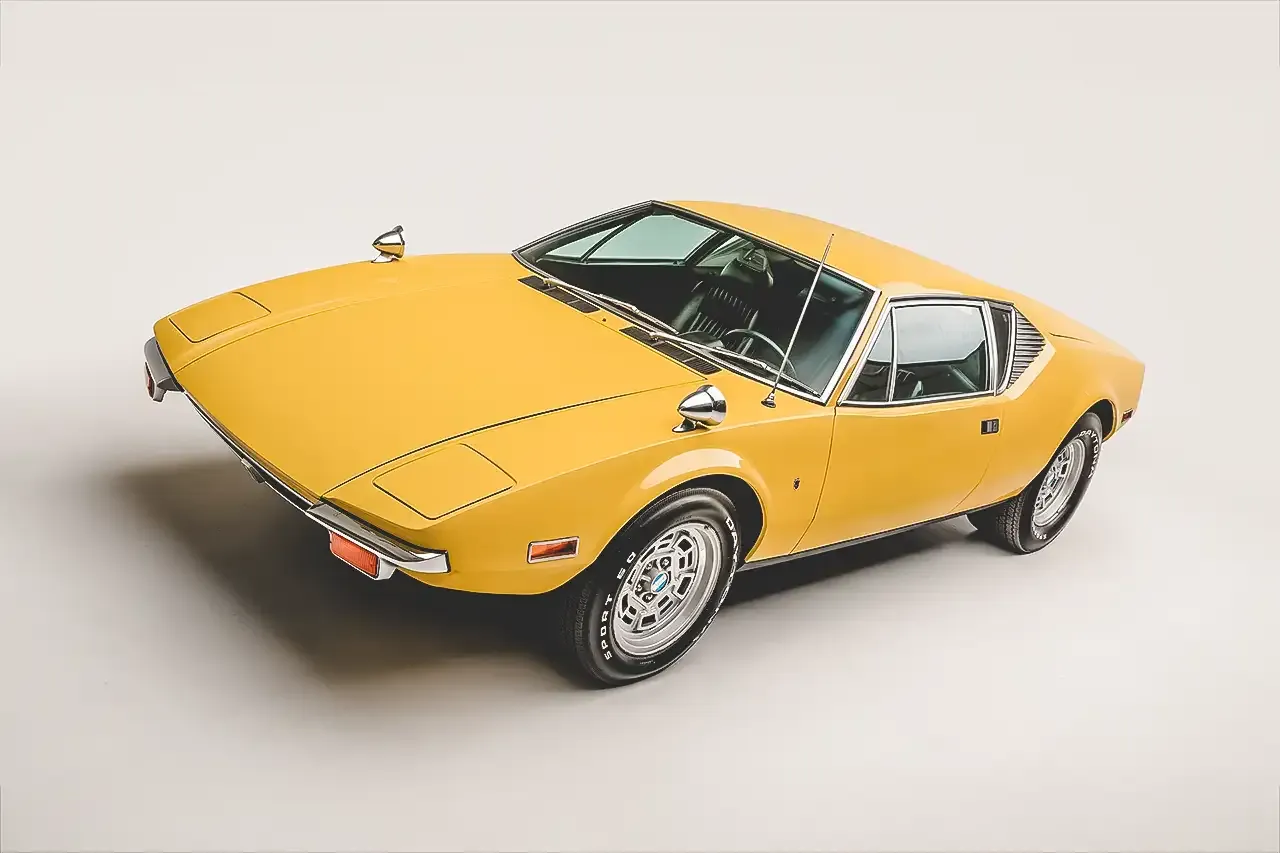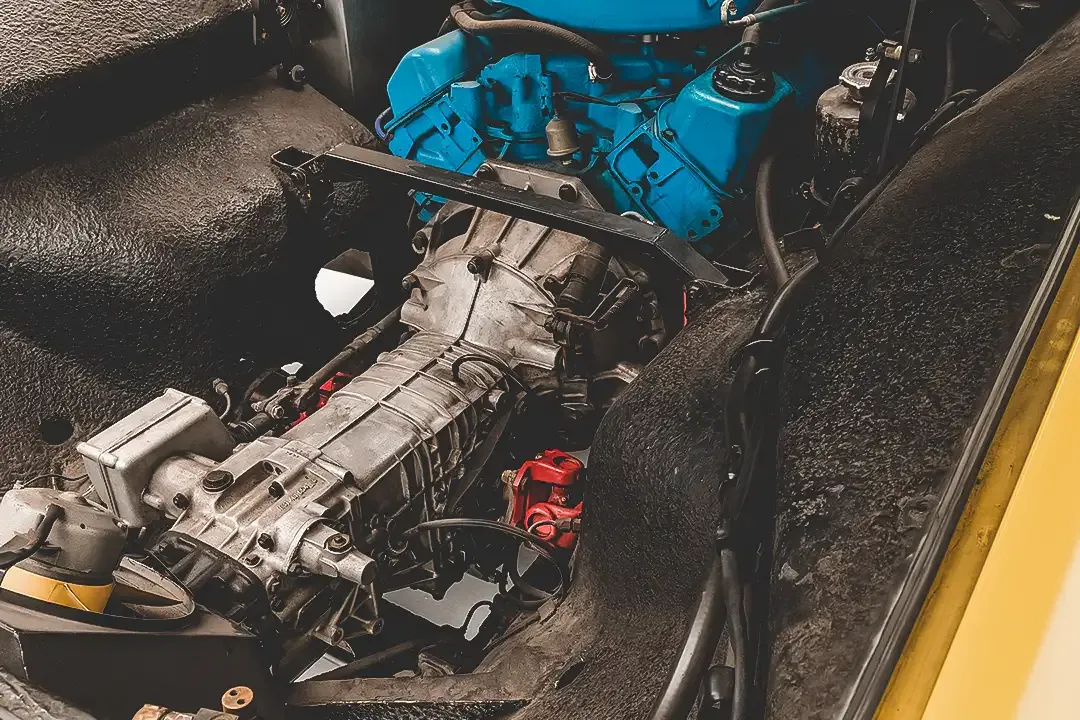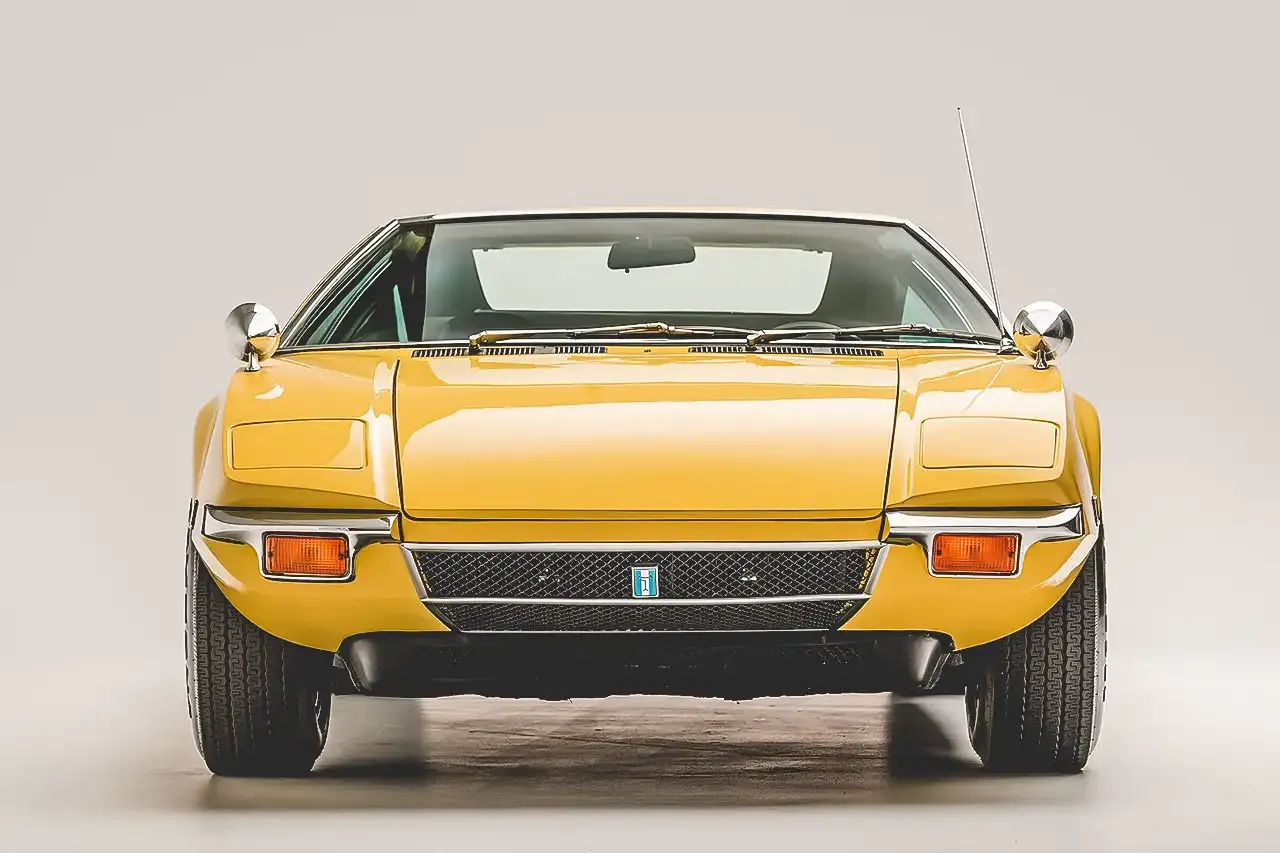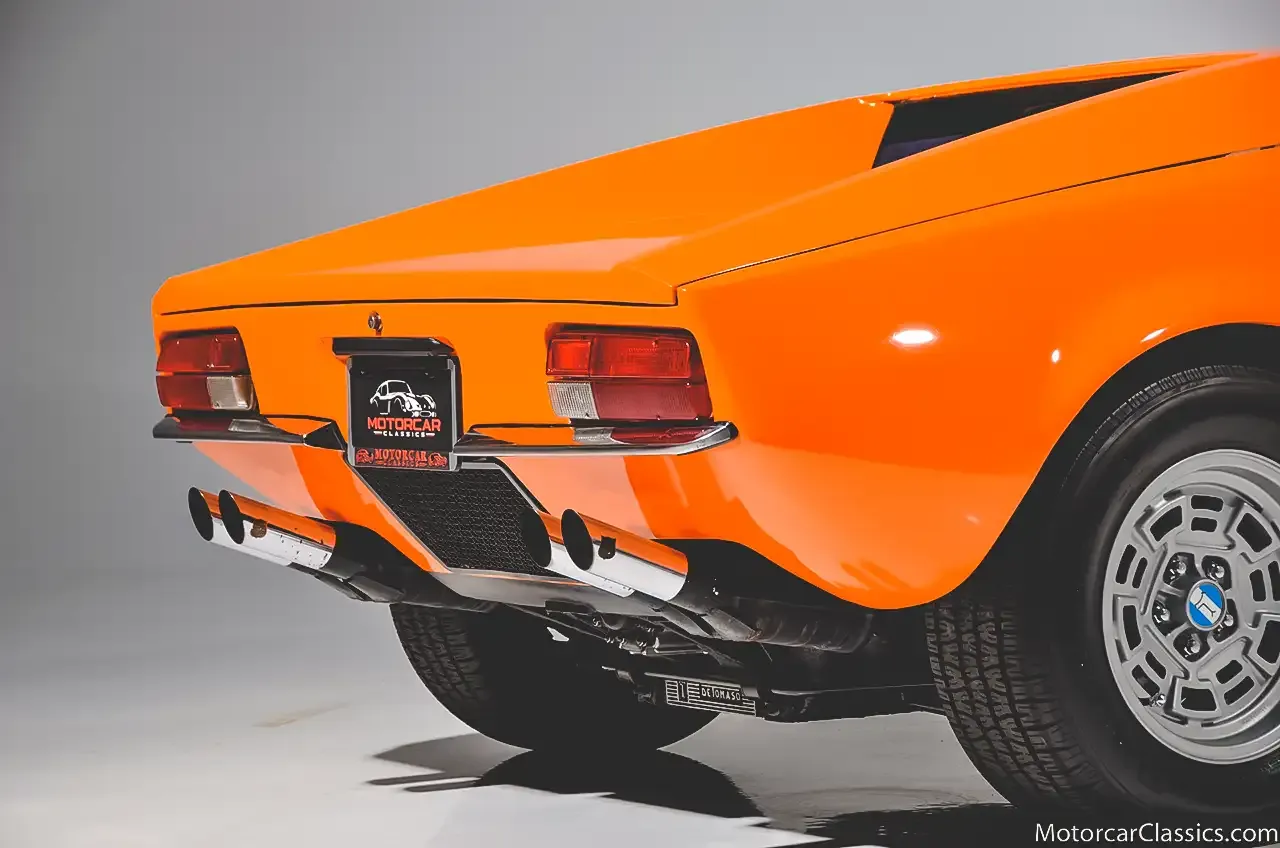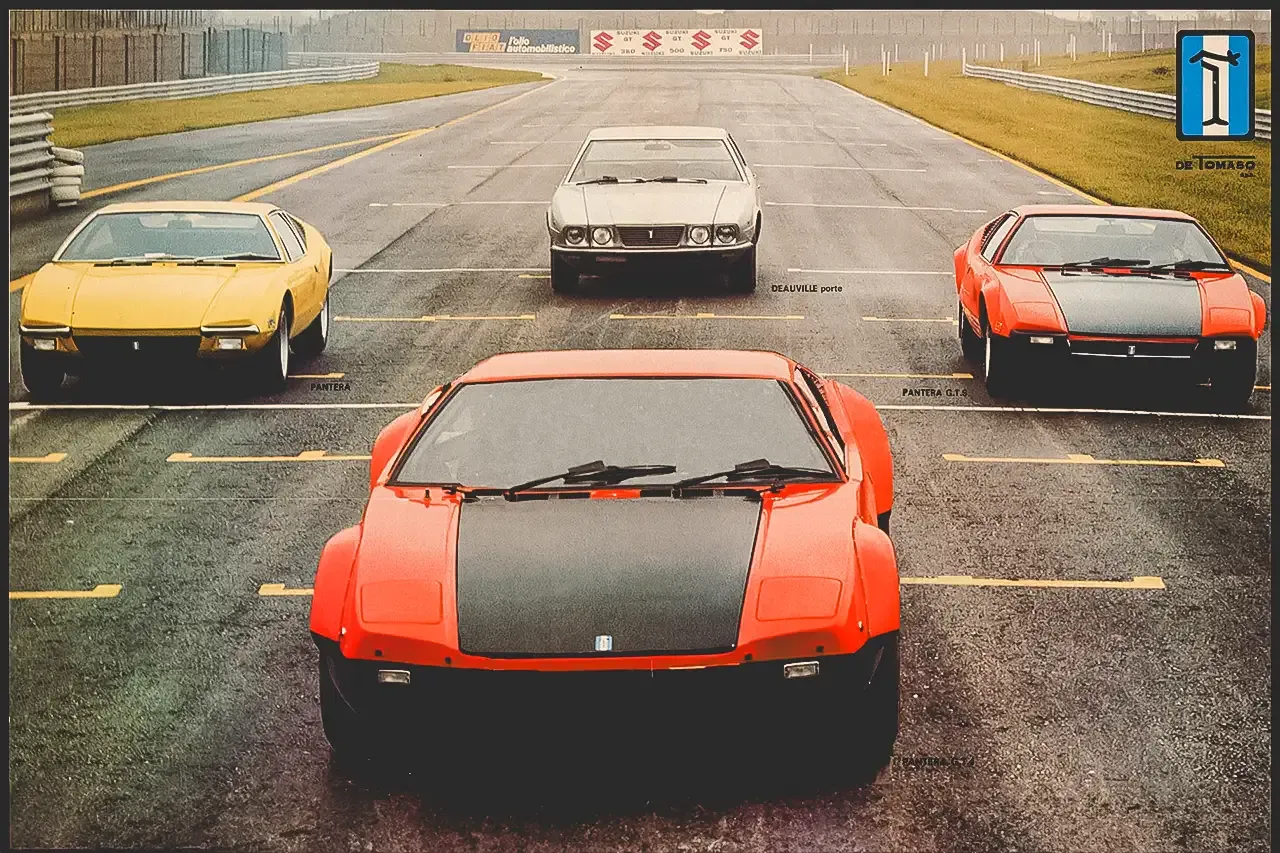Hamburger with spaghetti
Photos: Petersen Automotive Museum / Motorclassics.com
Even at a time when sports car manufacturers were swarming on every corner, the DeTomaso Mangusta created an impact on the public when it was presented. Especially in Iacocca, very attentive to the customers' footsteps. Ford's charismatic leader aimed to reinforce the group's dominant position in all market segments. After the failed attempts to acquire Ferrari, Iacocca saw in DeTomaso a very logical solution to his ambitions: here was a brand with a purely Italian DNA but which used the same engines that the Ford dealer network was used to supporting. DeTomaso could therefore be treated like any other model in the range, whether in terms of assistance or warranties. This time, there was not exactly an attempt to acquire the brand, but rather a purchase of the distribution rights for that model. Iacocca had already realized, the hard way, that the pride of a Latino businessman (especially former pilots) did not bend or sell easily. The alliance with Ford would be, for Alejandro DeTomaso, both an opportunity and a compliment. For the American brand, it was a way to debut its presence in that segment, keeping risks at reasonable levels.
Although the Mangusta was enthusiastically received, its reputation for poor build quality affected its ambitions immediately. Therefore, to implement this alliance it was necessary for the car to be reformulated, to resolve engineering defects and also to make the change evident. The plan involved an upgrade of the Mangusta, but with the capital injection, DeTomaso went much further. The Pantera thus introduced the unibody chassis and a completely new body. From a marketing point of view, the endorsement of Italian design was relevant. The Ghia studio was therefore chosen but, paradoxically, the author of the drawing ended up being American. Tom Tjaarda worked at Ghia and Pininfarina, having created, among others, the Ferrari 365 California, Fiat 124 Spider and Ford Fiesta MkI lines.
The project was being built with all the right steps but, at the same time, time pressure had to be dealt with:
Iacocca had heard rumors that AMC was preparing to launch the AMX and that Chevrolet was studying the launch of a mid-engine Corvette. In his understanding, in any business or market segment, the most important thing was to be the first to arrive, which is why he put immense pressure on Alejandro De Tomaso. Between the idea and the presentation of Pantera, only nine months passed. A short gestation period for a car, especially if we consider that it was the first attempt at producing a supercar for the masses. The Pantera would be distributed through Lincoln dealerships, and sold for around $10,000. For context, a Corvette cost 6,000 and the most affordable Ferrari around 20,000. These values made the Pantera a relatively affordable exotic, with no direct rivals.
Iacocca was a fan of Italian cars and believed he had found the perfect formula to convince Americans to surrender to this type of car. However, there were things typical of a supercar that that market was not used to: firstly, the lack of space and the impractical side of a mid-engined sports car; secondly, reliability problems typical of this type of car. The short development time meant that the first 700 Pantera units arrived at dealerships with immense design and quality defects. Production was carried out entirely in Italy, using manual processes that were very poorly adapted to the urgency of small mass production. Complaints began pouring in immediately, and Lincoln network mechanics were less than appreciative of having to work in a more congested engine bay than normal.
The Pantera continued to be a super sports car that was much more reliable and cheaper to maintain than its Italian rivals from Ferrari or Lamborghini. However, American customers who purchased the Pantera at $10,000 did not have this term of comparison. They were accustomed to the simple, reliable Mustang, Corvette, and Camaro, and therefore had no patience for the Pantera's temperamental and youthful problems, such as engine heat and constant electrical failures.
As always, Iacocca reacted quickly and hired Ford driver Bill Stroppe's West Coast workshops to make the necessary improvements to the model. In 1973, the Pantera had already overcome most of its defects with simple upgrades, which could even be retrofitted to previously sold cars. But the damage was done and the reputation as a problem car was difficult to undo.
Faced with increasing environmental and safety restrictions, it was becoming difficult for Ford to continue selling the model.
First it was necessary to use a version of Cleveland with a lower compression ratio and less than 250 hp, to meet the emissions limit. In the future, it was announced the need to redesign the entire front, to comply with protection standards in the event of a crash, which would mean a large investment. Then at the end of 1974, Ford gave up on the Pantera.
Alejandro De Tomaso starts importing engines from Australia and producing the Pantera in different versions. With some preparation work carried out in Switzerland, the used Clevelands had up to 355 hp. In 1980 the chassis underwent evolutions. The GT5 was then born, with widened tracks, fiberglass extensions, side flaps and front spoiler, and in 1985 the GT5-S, with an aerofoil similar to that of the Lamborghini Countach. The interior has evolved and received refinements.
In 1990 the final evolution took place, with a redesign by Marcello Gandini and a 5000cc Ford Windsor engine.
The suspension has also been reworked. Of this model, called the Pantera Si, only 38 units were manufactured, with information on four units with a “targa-type” roof. In 1993, production officially ended.



